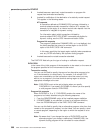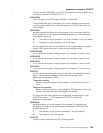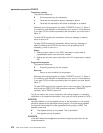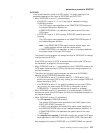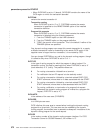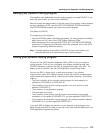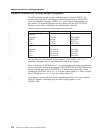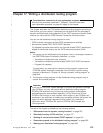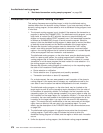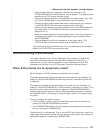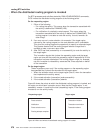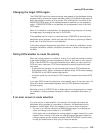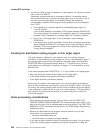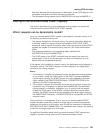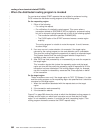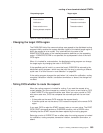
6. “Distributed transaction routing sample programs” on page 593.
Differences from the dynamic routing interface
This section discusses some significant ways in which the distributed routing
interface differs from the dynamic routing interface. If you have previously written a
dynamic routing program, and are about to write a distributed routing program, bear
in mind that:
1. The dynamic routing program is only invoked if the resource (the transaction or
program) is defined as DYNAMIC(YES). The distributed routing program, on the
other hand, is invoked (for BTS activities that are run asynchronously and
eligible non-terminal-related START requests) even if the associated transaction
is defined as DYNAMIC(NO); though it cannot route the request. What this
means is that the distributed routing program is better able to monitor the effect
of statically-routed requests on the relative workloads of the target regions.
2. Because the dynamic routing program uses the hierarchical “hub” routing
model—one routing program controls access to resources on several target
regions—
the routing program that is invoked at termination of a routed request
is the same program that was invoked for route selection
.
The distributed routing program, on the other hand, uses the distributed model,
which is a peer-to-peer system; the routing program itself is distributed.
The
routing program that is invoked at initiation, termination, or abend of a routed
transaction is not the same program that was invoked for route selection
—it is
the routing program on the target region.
Because the dynamic routing program is invoked only on the requesting region,
the order of its invocations is strictly defined:
a. Route selection or notification
b. Route selection error (if appropriate, and possibly repeated)
c. Transaction termination or abend (if requested).
For a single request, the user area passed to each invocation of the dynamic
routing program is the same piece of storage; any modifications made to the
user area on one invocation are retained and passed to the next invocation.
The distributed routing program, on the other hand, may be invoked on the
target region as well as on the requesting region; because of this, the order of
its invocations is less strictly defined. For example, the final invocation on the
requesting region (for “routing attempt complete”) may occur before or after the
first invocation on the target region (for “transaction initiation”). To cope with this
uncertainty, the user area passed to the distributed routing program on its first
invocation on the target region is a
copy
of the user area on the requesting
region. This means that any modifications to the user area made on the target
region have no effect on the user area in the requesting region. For more
details, see the description of the DYRUSER field of the communications area
on page 592.
3. The distributed routing program is invoked at more points than the dynamic
routing program. Figure 46 on page 578 shows the points at which the
distributed routing program is invoked, and the region on which each invocation
occurs.
4. Unlike the dynamic routing program, the distributed routing program cannot:
the distributed routing program
576
CICS TS for OS/390: CICS Customization Guide
|
|
|
|
|
|
|
|
|
|
|
|
|
|
|
|
|
|
|
|
|
|
|
|
|
|
|
|
|
|
|
|
|
|
|
|
|
|
|
|
|
|
|
|
|
|
|



